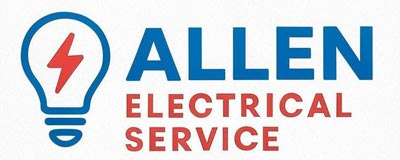Ground Fault Protection: Complete GFCI Installation Guide for 2020 NEC Compliance
When it comes to protecting your home and family, few electrical upgrades are as important as ground fault protection. A ground fault occurs when electricity escapes its intended path and travels through water, a damp surface, or even a person. This can lead to electric shock or fire. The most effective way to guard against these hazards is through GFCI installation (Ground Fault Circuit Interrupter). The 2020 National Electrical Code (NEC) expanded GFCI requirements, making it critical for homeowners to understand where this protection is needed and why professional installation matters.
1. What Is a GFCI and Why It Matters
A GFCI monitors the electrical current in a circuit and instantly shuts off power if it detects even a small imbalance—often in less than a tenth of a second. This quick action prevents electric shock and protects your family. GFCIs can be installed as outlets, breakers in your electrical panel, or portable units, and they are the most reliable way to meet today’s electrical safety standards.
2. 2020 NEC Requirements: Where GFCI Protection Is Needed
The 2020 NEC significantly expanded the locations that require GFCI protection in residential settings. If you’re upgrading or remodeling your home, these are the key areas where gfci installation is required:
Bathrooms – All receptacles must have GFCI protection.
Kitchens – Outlets serving countertops, dishwashers, refrigerators, and beverage coolers require GFCIs.
Laundry Areas – All 125–250 volt receptacles for washers, dryers, or utility sinks.
Garages and Accessory Buildings – All outlets, including those used for appliances and tools.
Basements (Finished and Unfinished) – Every receptacle, regardless of purpose.
Crawl Spaces – Both lighting and receptacle outlets require protection.
Outdoors – All exterior outlets, including those for HVAC equipment.
Boathouses and Docks – Every receptacle and lighting outlet.
Outlets Near Sinks – Any receptacle within 6 feet of a sink in areas such as mudrooms, wet bars, or utility spaces.
HVAC Equipment – Outdoor heat pumps and mini-split systems now require GFCI-protected outlets.
Even if your home is older and not required to meet the latest NEC standards, adding GFCI outlets in these locations is one of the simplest and most effective safety upgrades you can make.
3. Testing and Maintenance
Once installed, GFCIs should be tested monthly. Each outlet or breaker has a “Test” and “Reset” button. Press “Test” to verify that the power shuts off, then press “Reset” to restore power. If a GFCI fails to trip or frequently trips without cause, it’s time for professional inspection or replacement.
4. Why Professional GFCI Installation Is Critical
While GFCI outlets are designed to prevent shock, proper installation is essential. Incorrect wiring can defeat the safety feature and leave your home at risk. A licensed electrician ensures that every outlet or breaker is correctly connected, labeled, and compliant with the 2020 NEC.
Protect Your Home with Expert GFCI Installation
Ground fault protection is a small investment that delivers major safety benefits. Whether you’re upgrading an older property, remodeling your kitchen, or adding outdoor outlets, professional GFCI installation ensures your home meets the 2020 NEC and provides the highest level of protection. Schedule a ground fault inspection and GFCI upgrade with a trusted electrician to keep your home safe, code-compliant, and worry-free.
Give us a Call Today at 757-679-9383
Or, use our online form to request a quote today in Virginia Beach, Chesapeake, Norfolk, Portsmouth, & Eastern Suffolk.
Be sure to check out our TOP Reviews on Google Business!

